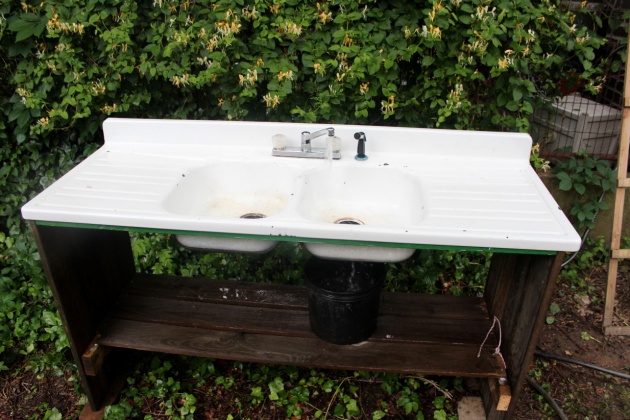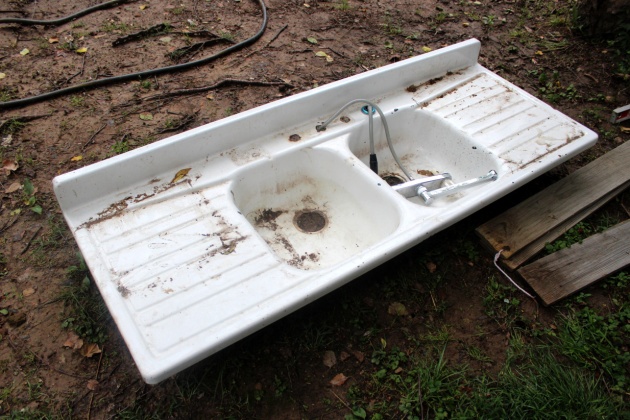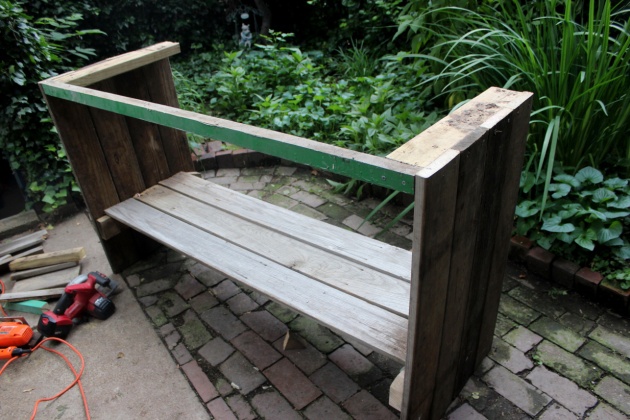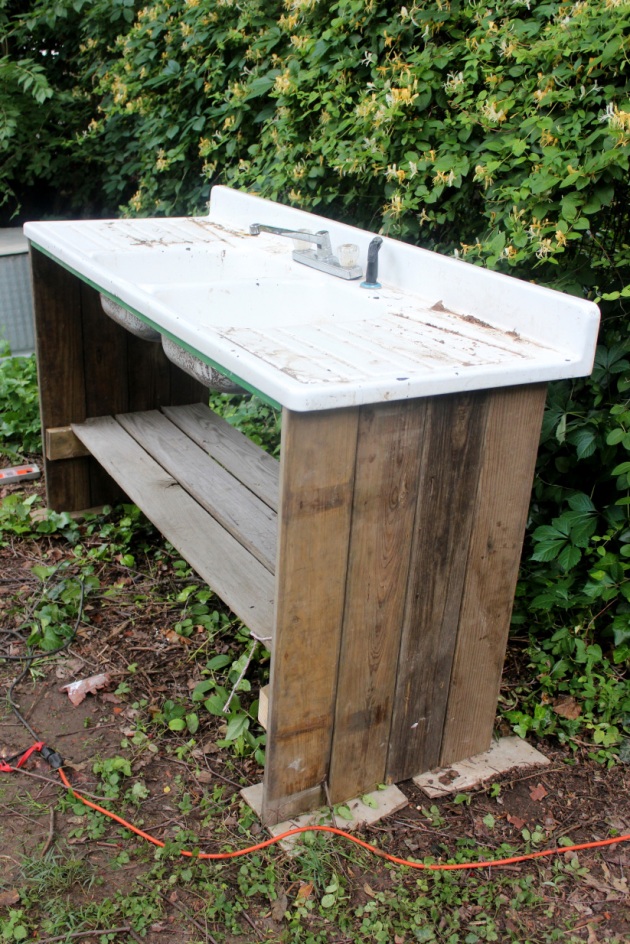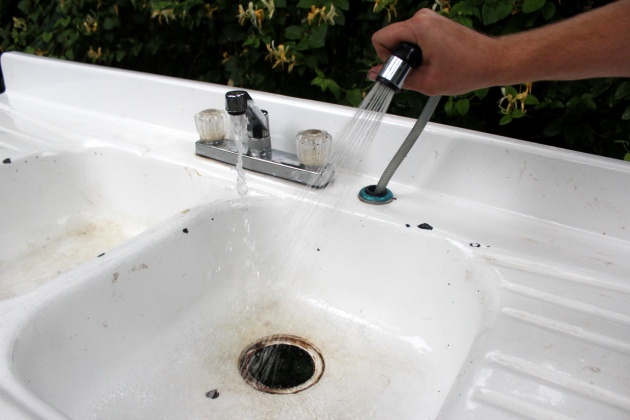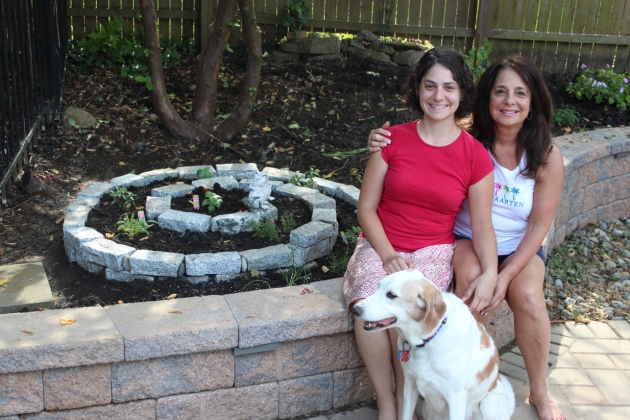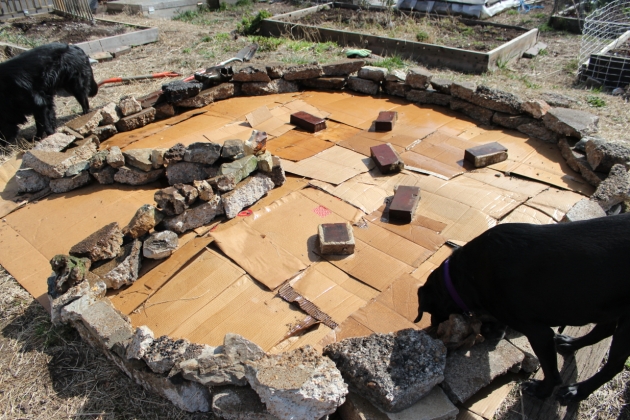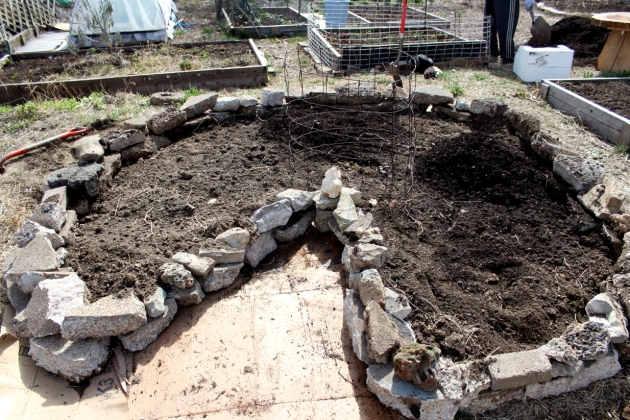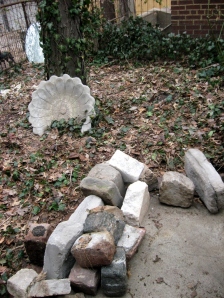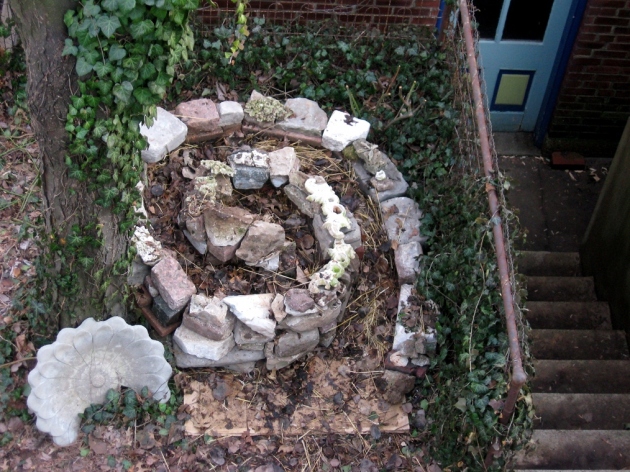Our garden in the side yard is too big to enclose with a hinged cold frame hoop house, like the one we showed in our last post. Last year we came up with the idea of building a half hoop house when we realized that we couldn’t construct a full one due to a large bird house on a pole concreted into the ground right next to the garden plot. Since we’re renting, we decided to build around it.
Just a note, if you’re looking to cover your garden for the winter, it’s much easier to enclose a raised bed garden that has a wooden frame. That way you can attach the PVC conduit pipes to the frame using the PVC U-brackets (like this one) we showed in our cold frame post.

As you can see on the left side of the picture, only one long side of our garden has a wood frame to attach the PVC and U-brackets to. We attached five 7 1/2 ‘ PVC pipes vertically, evenly spaced to form the straight side of the half hoop house. On the other long side (right) we measured out the spacing and fit the ends of our PVC pipes over rebar we hammered into the ground. These were then bent and inserted into L brackets at the top of the straight side, connecting the two together.
 We then added extra support to the structure by attaching PVC pipes horizontally across the frame, using electrical tape. You can see the reinforcement in this picture, taken after we had attached the plastic sheeting. This extra support strengthens the hoop house so it can stand up to the snow and wind over the winter.
We then added extra support to the structure by attaching PVC pipes horizontally across the frame, using electrical tape. You can see the reinforcement in this picture, taken after we had attached the plastic sheeting. This extra support strengthens the hoop house so it can stand up to the snow and wind over the winter.
As for the door, we kept it in place during the summer. Last year, we built it by constructing a frame out of 2x4s. Both sides of the door frame were cemented into the ground, and reinforced with horizontal 2x4s. At both points where the door frame meets the PVC pipe at the top, we drilled holes straight through the face of the wooden frame and used zip ties to attach it to the PVC pipe. We made the door out of scrap lumber and slapped on some hinges, then added a handle and lock to secure it when closed. We also added weather stripping to keep the doorway more insulated.

Next we draped a large piece of polyethylene plastic sheeting over the PVC frame. The plastic was attached to the wooden frame at the bottom (to the left of the picture) using duct tape furring strips and staples, as shown in our cold frame post. On the right side where there was no wooden frame, we buried the plastic and weighed it down using landscaping blocks we scored for free off Craigslist.
 The two short ends (front and back) of the structure were then sealed with plastic sheeting, which was stapled to the wooden frame at the bottom and attached to the top with PVC snap clamps (mentioned in the cold frame post).
The two short ends (front and back) of the structure were then sealed with plastic sheeting, which was stapled to the wooden frame at the bottom and attached to the top with PVC snap clamps (mentioned in the cold frame post).
Note: It’s best to attach the plastic to the front and back first, so the top sheet overlaps and prevents any rain or snow from getting in.
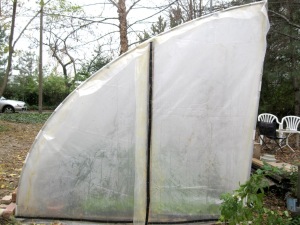 On the back side we stapled the plastic along the bottom and also to a wooden post in the middle, which was cemented into the ground and attached to the PVC pipe with a zip tie. Snap clamps were used at the top and along the side.
On the back side we stapled the plastic along the bottom and also to a wooden post in the middle, which was cemented into the ground and attached to the PVC pipe with a zip tie. Snap clamps were used at the top and along the side.
The end result:

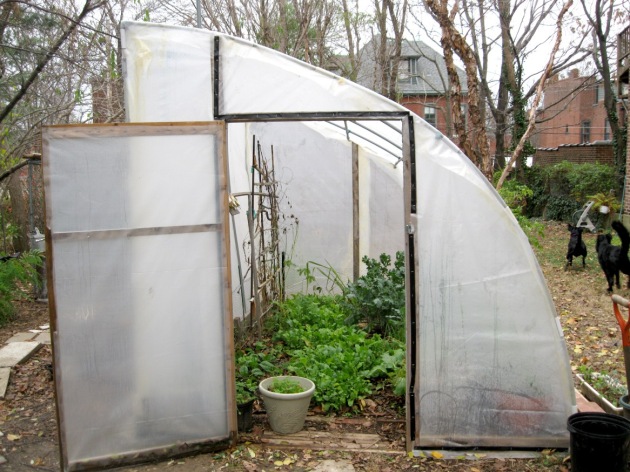
We re-used all of our materials from last year, including the PVC pipe and polyethylene plastic sheeting. While these are not environmentally friendly materials, we’re determined to get the most use out of them as possible. Using the duct tape furring strips and snap clamps allows us to easily disassemble the hoop house and store it for the next year.
